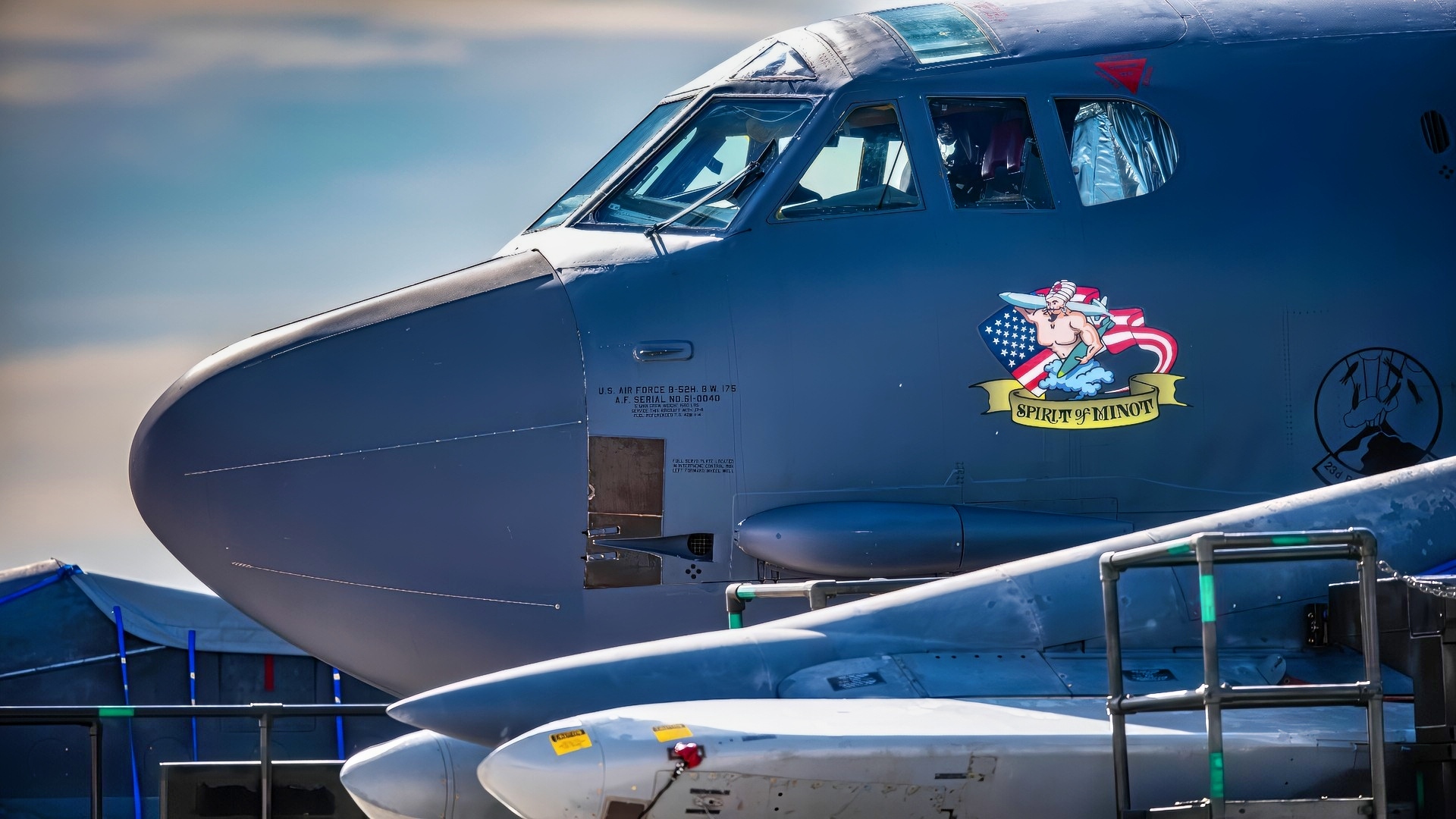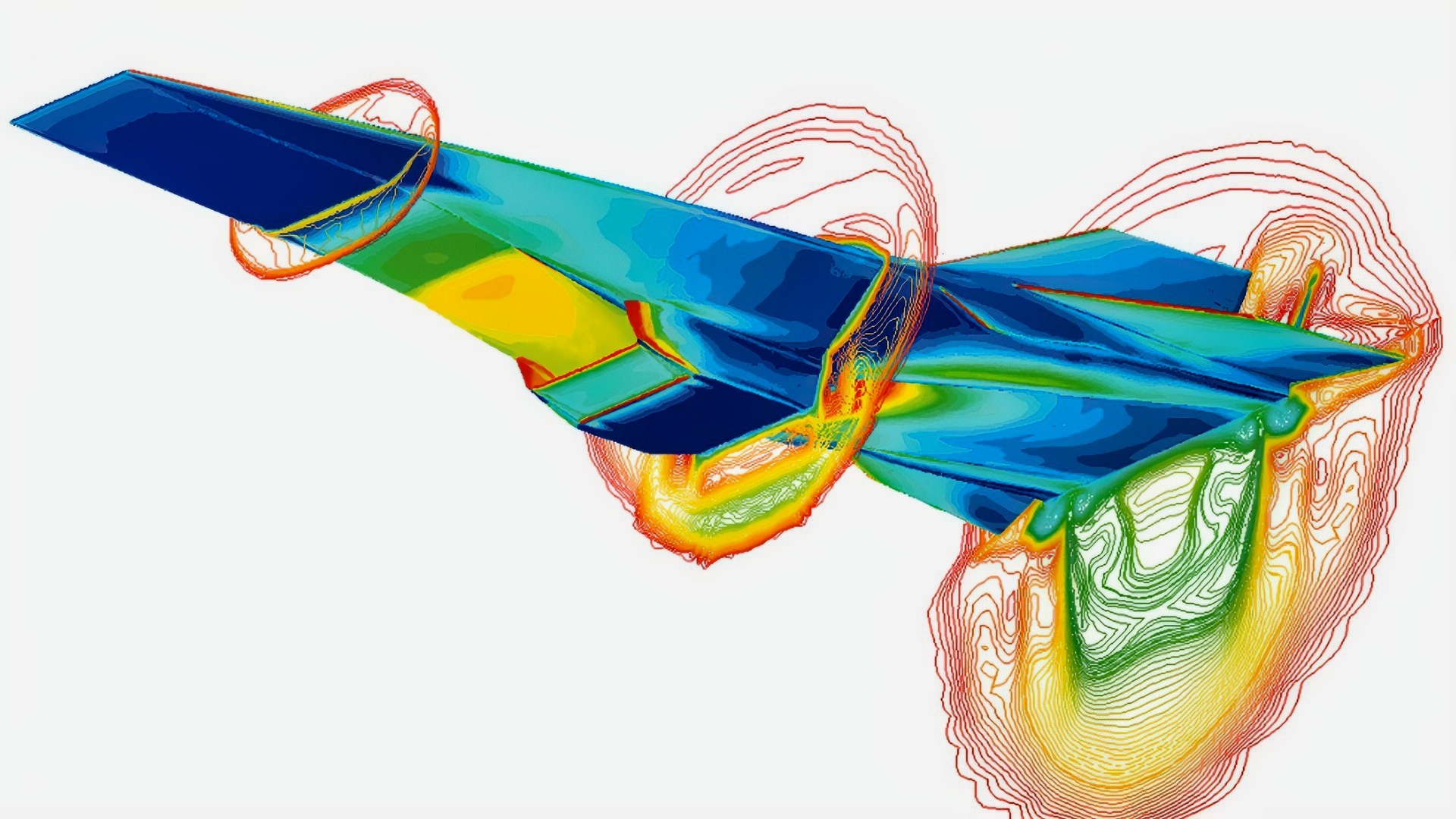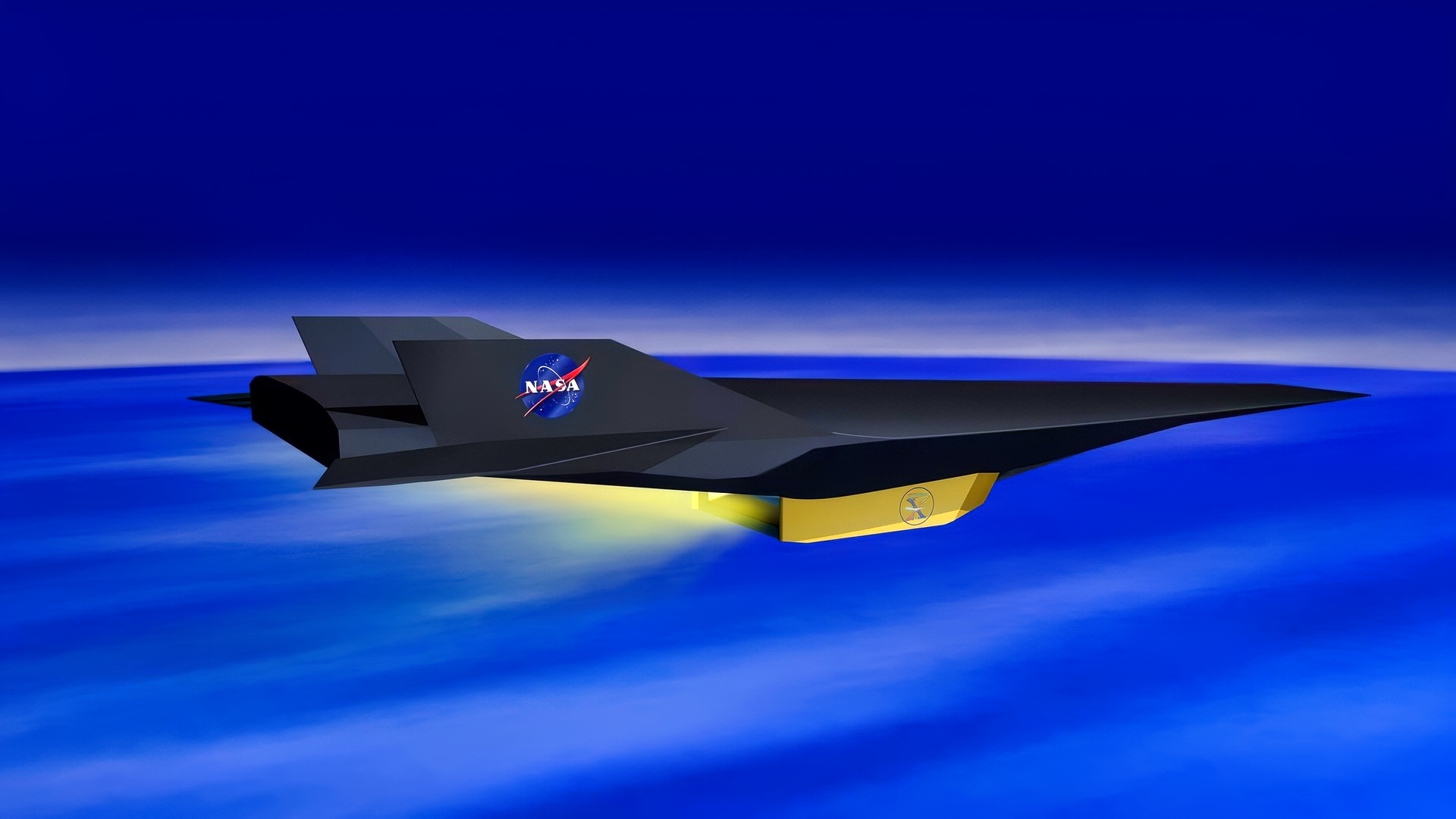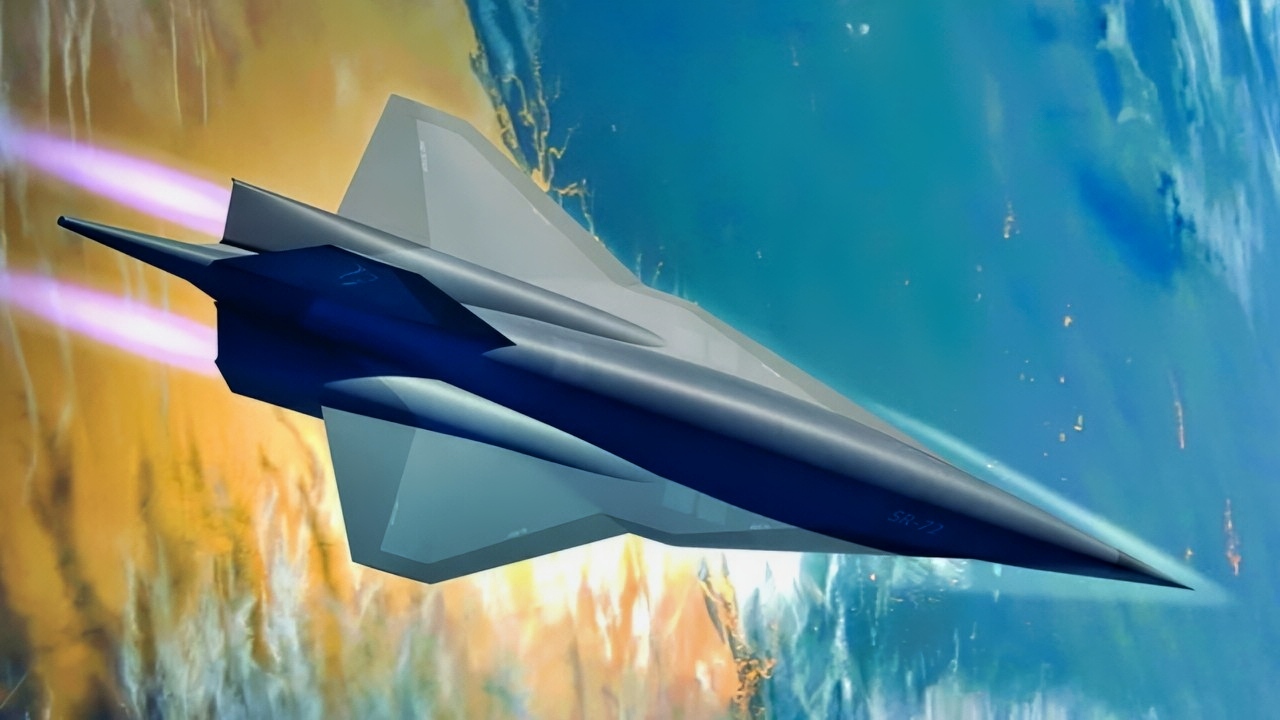Key Points and Summary – The X-43A Scramjet That Broke Mach 9.6 — And Then We Walked Away
-NASA’s X-43A was a black, wedge-shaped test vehicle that did something once thought impossible: it proved an air-breathing scramjet could fly at hypersonic speeds, reaching Mach 7 and then Mach 9.6 in 2004.

U.S. Air Force B-52H Stratofortress aircraft fly by the 81st Liberation Day Parade, leveraging a training sortie during the U.S. Air Force’s 2025 Department-Level Exercise series in Guam, July 21, 2025. The flights consisted of 13 waves of aircraft from the U.S. Air Force, Royal New Zealand Air Force, Japan Air Self-Defense Force and Republic of Korea Air Force, showcasing the U.S. and its allies’ commitment to a free and open Indo-Pacific region. The DLE encompasses all branches of the Department of Defense, Allies, and partners, employing over 400 joint and coalition aircraft and more than 12,000 personnel across more than 50 locations spanning 3,000 miles. (U.S. Air Force photo by Senior Airman Jade M. Caldwell)
-The Hyper-X program that birthed it was deliberately short, high-risk, and focused on one thing — moving scramjets from wind tunnels to real flight.
-Then funding dried up, follow-on variants were canceled, and the United States shifted attention elsewhere.
-Today, as China and Russia race to field hypersonic weapons, the X-43A’s brief flights still echo. We tested the future, then treated it like a science fair project.
The X-43A Hypersonic Scramjet Deserves a Place in History
If you were designing the most important experimental aircraft of the early 2000s, you probably wouldn’t picture a small, black wedge that never lands and dies in the Pacific on purpose.
That was the X-43A.
Launched from under the wing of a B-52, boosted by a modified Pegasus rocket, and set loose for just seconds of powered flight, the X-43A did something profoundly simple and profoundly hard at the same time. It proved that a scramjet — an air-breathing engine that compresses and burns supersonic airflow — could actually work at hypersonic speeds in the real atmosphere, not just in a PowerPoint or a wind tunnel.

A U.S. Air Force B-52H Stratofortress assigned to the 23rd Bomb Squadron sits on the flightline during exercise Prairie Vigilance 25-1 at Minot Air Force Base, North Dakota, April 12, 2025. Vigilance series exercises are conducted with a focus on the safe and secure handling of equipment. (U.S. Air Force photo by Senior Airman Kyle Wilson)
In 2004, that little wedge hit Mach 7 and then Mach 9.6. Then the program went away.
Today, we talk endlessly about hypersonic missiles, hypersonic glide vehicles, and Chinese or Russian breakthroughs.
But more than twenty years ago, a tiny NASA test vehicle quietly showed what air-breathing hypersonics could do. The way we used — and then dropped — that lead says a lot about how America treats high-risk technology in an age of great-power competition.
Why NASA Dreamed Up the X-43A
To understand the X-43A, you have to go back to the 1990s and remember what NASA was trying to do.
For decades, hypersonic flight lived in two places: on paper and in rocket programs. The X-15 rocket plane had already given the United States a taste of piloted hypersonic flight in the 1960s, but it was essentially a rocket with wings. Valuable, yes, but not something you could build into an airplane or a missile that breathes air instead of hauling its own oxidizer.

X-15 USAF Museum Photo. Image Credit: National Security Journal.
NASA’s Hyper-X program was built to tackle that gap. The idea was straightforward and ambitious: stop just talking about scramjets and actually fly one, bolted into a real airframe, at true hypersonic speeds. The X-43A was the first, smallest incarnation of that concept.
The goals were tightly focused:
Prove an integrated scramjet could start, run, and generate thrust at hypersonic speeds.
Gather real flight data on the aerodynamics and heating of a slender, lifting-body vehicle at Mach 7–10.
Retire “unknown unknowns” that wind tunnels and computer models couldn’t touch.
Hyper-X was not supposed to be a prototype passenger jet or a weapons program. It was a high-risk, high-payoff research project meant to answer a brutal question: can we make an air-breathing engine work where rockets currently own the sky?
Three Flights, One Failure, Two Records
The team decided to keep the vehicle expendable and the flight profile short. Each X-43A would be a one-shot test article. A B-52 would carry the stack — Pegasus booster plus X-43A — to altitude. The booster would accelerate the combination to the target speed and height. The X-43A would separate, light its scramjet for a handful of seconds, and then glide into the Pacific.
Simple on paper. In practice, the program nearly died before it began.
The first flight, in 2001, failed. The booster lost control seconds after release, the vehicle began to tumble, and range safety destroyed the stack. The scramjet never got its chance. Investigators pointed to control-system issues and modeling mistakes. F
or a program as politically vulnerable as Hyper-X, a spectacular early failure could have easily been the end.
Instead, NASA went back to the drawing board, tuned the booster, and pressed ahead.
In March 2004, the second X-43A finally got its moment. Dropped from the B-52, boosted to roughly Mach 7 over the Pacific, the little wedge separated cleanly. Its inlet door opened, hydrogen fuel flowed, and the scramjet lit. For about ten seconds, the X-43A flew under its own air-breathing power at more than seven times the speed of sound before transitioning to a long glide and a planned impact into the ocean.

X-43A Test Image. Image Credit: Creative Commons.

X-43A from NASA. Image Credit: Creative Commons.
That alone would have been historic.
But the team wasn’t finished. In November 2004, a third X-43A flew even higher and faster, riding its booster to near Mach 10 and then igniting the scramjet at about Mach 9.6. Again, the powered segment was brief — on the order of ten seconds — followed by minutes of controlled high-speed glide and, finally, splashdown. That flight set a record for jet-powered aircraft and put the X-43A in the Guinness World Records.
In pure flight-time terms, the program was tiny. A few minutes of data. In technological terms, those minutes punched a hole in the ceiling.
What Ten Seconds of Fire Really Bought Us
From the outside, ten seconds of scramjet operation doesn’t sound like much. For engineers, it was massive.
First, the X-43A demonstrated that you could actually start and sustain a scramjet at those speeds in the messy, real atmosphere. Wind tunnels can simulate hypersonic conditions, but they are short-duration and constrained; computer models can lie. The X-43A gave the community something they had never had before: instrumented flight data at Mach 7 and Mach 9.6 from an air-breathing vehicle.
Second, the program validated the idea of integrating the engine and the airframe into a single system. At hypersonic speeds, the vehicle’s shape isn’t just a body carrying an engine. It is part of the engine. The X-43A flew as a tightly coupled lifting body and propulsion system, proving that you could design, build, and control that kind of integrated machine.
Third, it showed that guidance and control were achievable. Keeping a slender, hypersonic wedge stable and steerable after booster separation, during engine operation, and in an unpowered glide is non-trivial. The flight-control systems worked. The vehicle went where it was supposed to go long enough to collect the data.
Finally, the flights gave NASA and the wider hypersonics community confidence that their models and ground tests were not fantasy. They had a reference point — a real, flown configuration — against which to tune every future simulation and wind tunnel run.
If you are working on hypersonic cruise missiles, high-speed reconnaissance concepts, or advanced access-to-space ideas today, you are living off that legacy whether you know it or not.
Why the Program Stopped
If the X-43A was such a success, why did it die after only three flights?
Part of the answer is timing. Hyper-X was conceived in a very different budget and political environment than the one it landed in. By the early 2000s, NASA was grappling with competing priorities: the aftermath of the Columbia disaster, debates over the shuttle’s future, and the early push toward new exploration architectures. Hypersonic flight was exciting, but it wasn’t front and center for an agency being told to think about Moon and Mars timelines.
There were follow-on concepts. The X-43C was supposed to test scramjets running on more practical hydrocarbon fuels instead of hydrogen, pushing closer to something a real weapon or aircraft might use. The X-43D would have stretched the speed envelope even further, toward Mach 15. Both were studied. Neither flew. Funding was suspended or shifted, and other programs took priority.
At the same time, the Pentagon was rethinking its own role. If air-breathing hypersonics were going to lead somewhere militarily, there was a strong argument that the Air Force and DARPA should steer the next steps. That logic ultimately produced the X-51A Waverider, a longer-duration, scramjet-powered demonstrator that picked up where X-43A left off.
For NASA, the box next to “demonstrate scramjet flight” was effectively checked. For Washington as a whole, that box became just one line item among many in a crowded, zero-sum budget fight.
The result was that the United States successfully flew the fastest air-breathing aircraft on record — then essentially shut the door on its own program and moved on.
From Hyper-X to Hypersonic Arms Race
Fast-forward to today and the landscape looks very different.
Hypersonics are no longer a niche research topic. They are at the center of a very public arms race. Russia boasts of its Kinzhal and Avangard systems. China tests hypersonic glide vehicles and cruise missile concepts that seem tailor-made to hold U.S. carriers and bases at risk in the Western Pacific. The United States is scrambling to field its own mix of hypersonic strike weapons, from boost-glide systems to air-breathing cruise missiles.

ATLANTIC OCEAN (June 4, 2020) The Ford-class aircraft carrier USS Gerald R. Ford (CVN 78) and the Nimitz-class aircraft carrier USS Harry S. Truman (CVN 75) transit the Atlantic Ocean, June 4, 2020.
Under the surface, the technical DNA from X-43A is everywhere.
The X-51A Waverider, a joint Air Force and DARPA project, took the scramjet story further with longer-burn flights and jet fuel instead of liquid hydrogen. Lessons from Hyper-X influenced everything from inlet design to materials choices and control laws. Modern hypersonic programs still rely on the kind of high-temperature aerodynamics, propulsion integration, and flight-test discipline that X-43A helped prove out.
The broader concept — that an air-breathing vehicle can operate at Mach 5, 7, or beyond using the atmosphere as its oxidizer — underpins the entire idea of hypersonic cruise missiles. Those weapons promise smaller, lighter vehicles for the same range, or more range from the same size, compared to rockets that must carry oxidizer on their backs.
In other words, the United States is now racing to weaponize a field where it once had a clean experimental lead. The X-43A was a scientific pathfinder. The world around it has turned that science into strategy.
A Missed Chance and a Warning
It is easy to romanticize a test program after the fact. The Hyper-X team would be the first to say X-43A was limited by design: short flights, tiny vehicles, narrow objectives. It was never meant to be a missile or an aircraft you could put into service.
But there is a difference between recognizing a program’s limits and walking away from the opportunity it opened.
The United States had, for a brief period, something like a ten-second head start on scramjet reality. It proved you could ignite and sustain an air-breathing engine at nearly Mach 10, capture the data, and bring the lessons home. Then, instead of immediately building a family of demonstrators, scaling up, and putting industry on a pathway to real systems, Washington treated X-43A as a one-and-done experiment.
That is the pattern we should be worried about in great-power competition: high-risk technology programs that reach their goal, then die on the vine because budgets shift, bureaucracies reorganize, or attention moves to the next shiny thing.
Meanwhile, adversaries watch, learn, and commit.
The X-43A Must Be Remembered
The X-43A was never going to be a sleek bomber or a frontline weapon. It was a blunt instrument aimed at a very specific problem: can air-breathing engines really work where rockets rule?
The answer, shouted at Mach 9.6, was yes.
That alone would make the program historic. But in the era of Chinese and Russian hypersonic weapons, the message is sharper. The United States had a chance to build on that success, to turn a tiny wedge of experimental data into a sustained lead in air-breathing hypersonics. Instead, it let the wedge fall into the Pacific and moved on, hoping that a few later demonstrators and crash programs would make up the difference.

MD-19 Drone from China Screenshot from Chinese Social Media.
Today’s hypersonic arms race is not happening in a vacuum. It is happening in the shadow of choices made twenty years ago, when a small black test vehicle proved the future of high-speed flight and Washington decided it had better things to do.
If America wants to stay ahead in hypersonics, it cannot keep treating breakthrough programs like X-43A as curiosities. It has to treat them the way great powers once treated new classes of ships and aircraft: as the starting pistol, not the victory lap.

SR-72 Artist Image by Lockheed Martin.
About the Author: Harry J. Kazianis
Harry J. Kazianis (@Grecianformula) is Editor-In-Chief and President of National Security Journal. He was the former Senior Director of National Security Affairs at the Center for the National Interest (CFTNI), a foreign policy think tank founded by Richard Nixon based in Washington, DC. Harry has over a decade of experience in think tanks and national security publishing. His ideas have been published in the NY Times, The Washington Post, The Wall Street Journal, CNN, and many other outlets worldwide. He has held positions at CSIS, the Heritage Foundation, the University of Nottingham, and several other institutions related to national security research and studies. He is the former Executive Editor of the National Interest and the Diplomat. He holds a Master’s degree focusing on international affairs from Harvard University.
More Military
The Essex-Class Aircraft Carriers Have An Embarrassing Message for the U.S. Navy
‘New’ Mach 4 MiG-41 6th Generation Stealth Fighter Has Warning for U.S. Air Force
Boeing’s F-47 NGAD 6th Generation Stealth Fighter Is No ‘Mission Impossible’











Krystal cane
November 18, 2025 at 10:47 am
As a message it burns up after about 30 seconds of flight